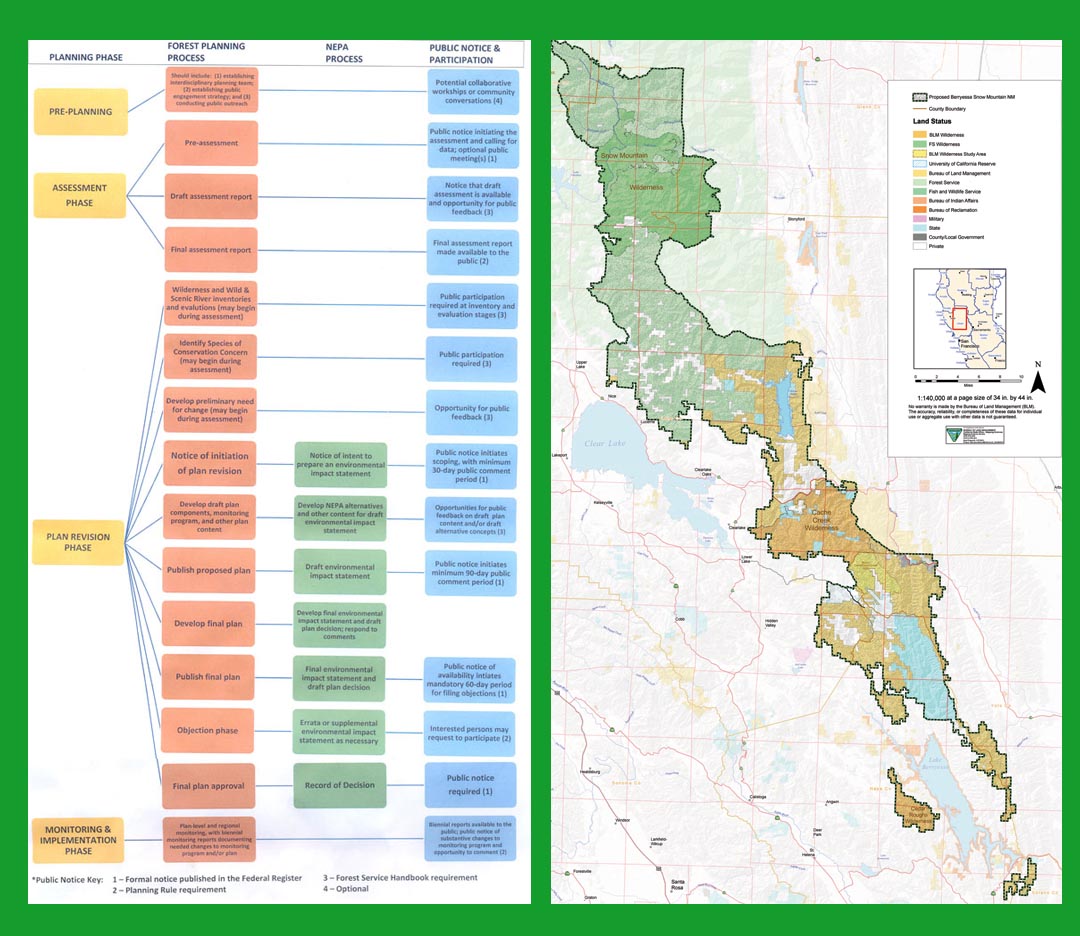by Victoria Brandon, Redwood Chapter Chair
About eighteen months after President Obama declared Berryessa Snow Mountain a national monument, effectively protecting the 330,000-acre section of sensitive public lands, Sierra Club joined other stakeholders and officials to discuss developing a comprehensive management plan for the land.
Tuleyome, a Woodland-based environmental organization, hosted the Jan. 20 gathering, which provided an initial conversation about how to best merge the Bureau of Land Management and the Mendocino National Forest objectives and plans for BSMNM.
Designated in July 2015, BSMNM permanently protects 330,000 acres of sensitive federal public lands in seven counties. Stretching nearly 100 miles from Cold Canyon in Solano County to north of the Snow Mountain Wilderness, the new Monument contains three federal Wilderness Areas and a Wild and Scenic River along with a remarkably diverse array of natural habitat types, ancient cultural resources, and recreational opportunities.
With acreage divided nearly equally between the Bureau of Land Management’s Ukiah Field Office and the Mendocino National Forest, management is complex. Each agency has its own planning structure, established customs and corporate culture, and objectives that are similar but by no means identical. Melding the two into an effective partnership will be challenging, but both agencies appear eager to rise to the occasion.
Although the Jan. 20 meeting was not a part of the official planning process, National Monument Manager Rebecca Wong, MNF Forest Supervisor Ann Carlson and BLM Ukiah District Field Manager Amanda James and other staff members were active participants in the discussion, guiding us through the complex series of steps needed to devise a comprehensive management plan for BSMNM.
The public will have many opportunities to comment as the management plan coalesces. Three “community conversations” were held in Upper Lake, Winters and Willows last year and were well attended. All recreational stakeholder groups are invited to participate in future meetings, along with scientists, tribes, state and local governments, non-governmental organizations, such as the Sierra Club, and interested individuals.
The more valuable contributions received will create a reasonable plan that preserves the sensitive values that were the rationale for designation and also maximizes its recreational potential.
With a 2018 target date for the adoption of a completed plan, it’s time to roll up our sleeves and get to work.
